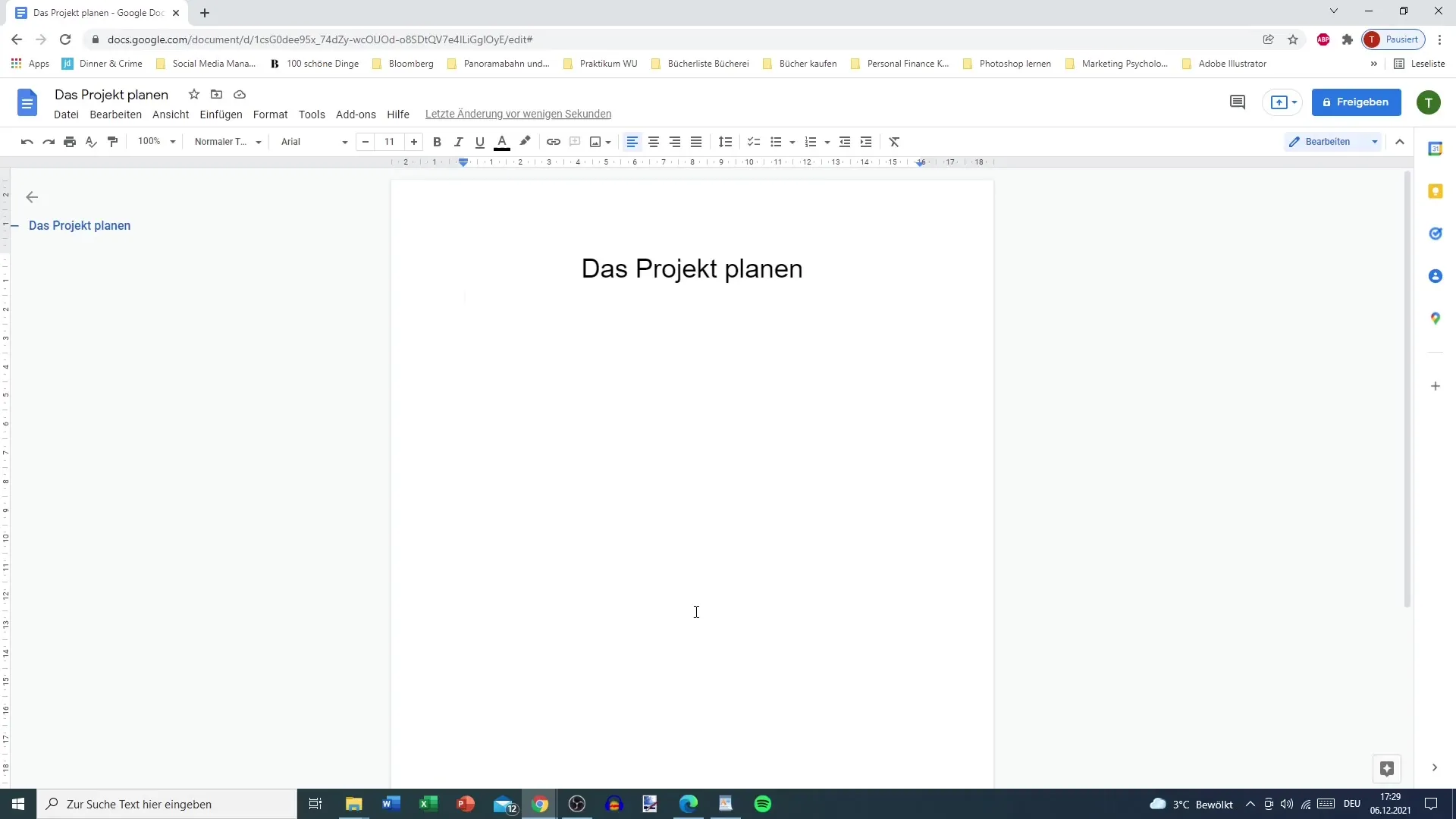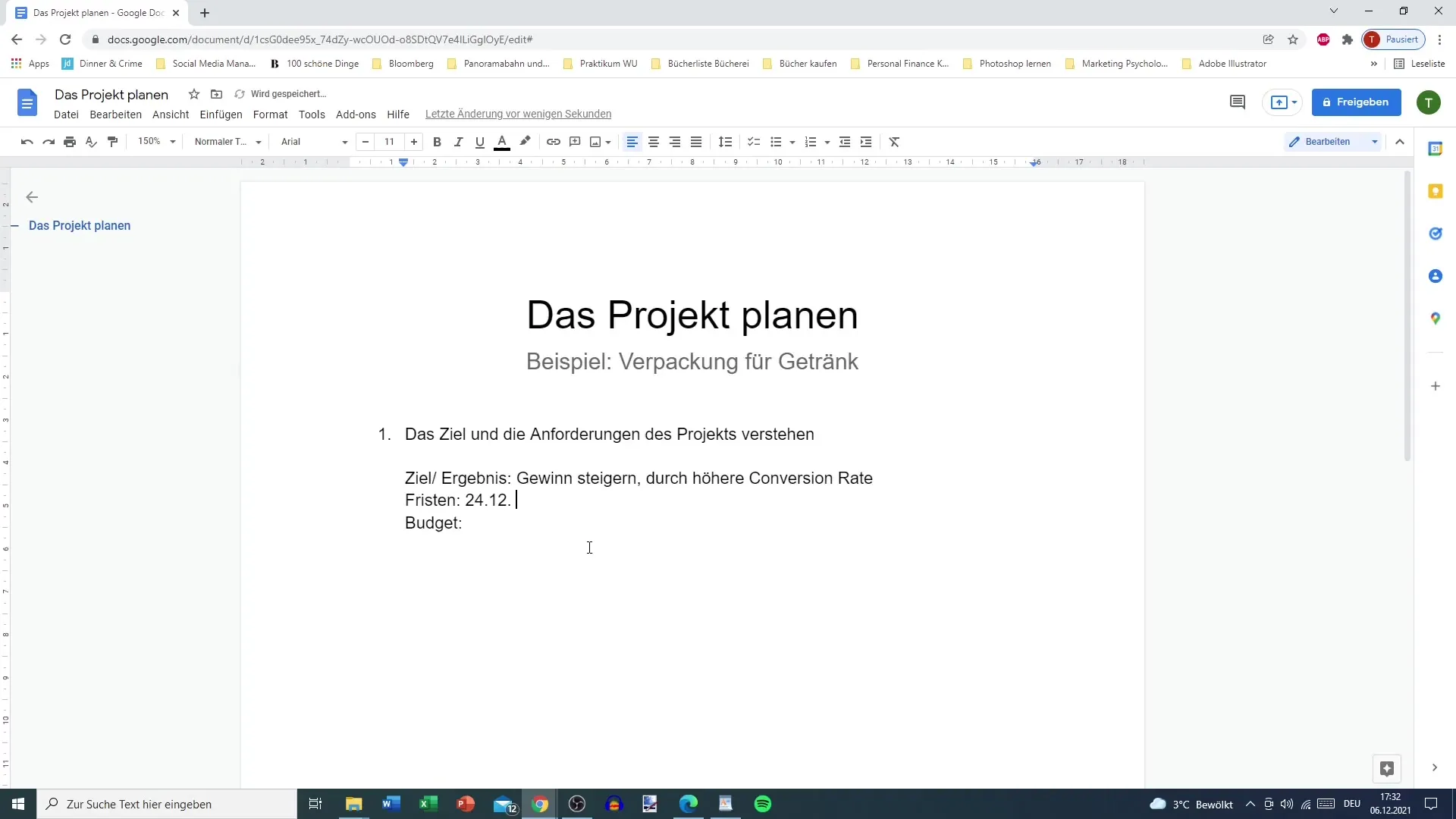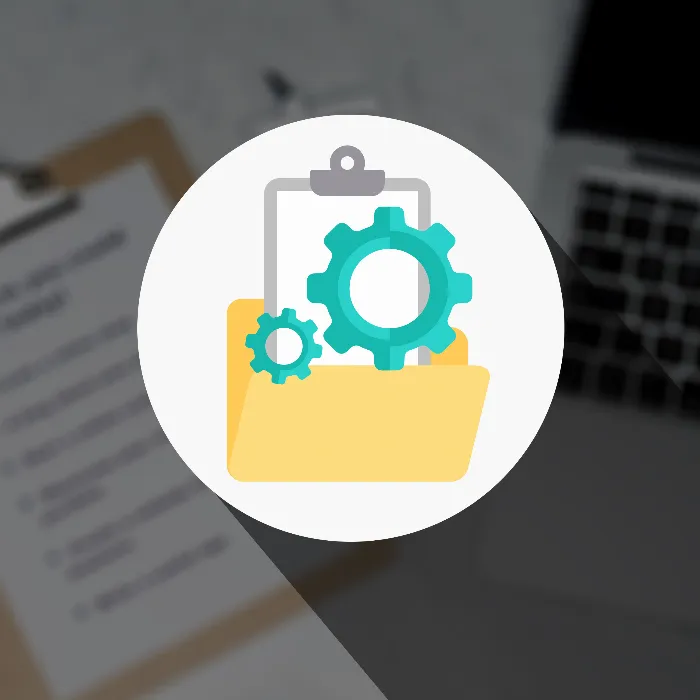Before you launch a project, it is crucial to understand the goal and requirements. This step is not only crucial for planning, but also sets the foundation for the entire project lifecycle. If you omit this step, you risk your project going in the wrong direction or ultimately not achieving the expected results. In this guide, I will show you how to effectively lay the foundations of your project planning.
Key Insights
- Understanding the project goals and requirements is the first step towards successful project planning.
- A clear goal, deadlines, and budget help steer the project and minimize risks.
- Include all relevant resources and costs in your planning to avoid unpleasant surprises.
Step-by-Step Guide
1. Define the Project Goal
The first step is to clearly define the project goal. The goal sets the focus and direction for the entire endeavor. You can imagine a concrete example: If you want to design packaging for a beverage, the goal is usually to increase sales. A clearly defined goal could be: "Increase the conversion rate and thus increase profits."

2. Set the Deadlines
Once the goal is clear, you should define a timeframe. Deadlines help make the project planning realistic and comprehensible. In our example, let's assume the project deadline is December 24, 2024. It is important that the timeframe allows enough flexibility to implement all necessary steps on time.

3. Determine the Budget
The budget is another essential aspect of project planning. It includes all the financial resources you need for project implementation, excluding employee salaries as they are paid regardless. In our example, we could set a budget of 100,000 euros for the project. This budget must cover all necessary expenses, such as graphic design or material costs.
4. Consider Resources and Costs
An effective project requires not only budget but also a clear overview of all available resources. These include materials, services, and possibly needed external resources. Ensure that your budget planning takes all these aspects into account. In the case of packaging design, this means that the 100,000 euros need to cover both design work and production of the packaging.
5. Review the Foundations
The final step in this phase is to review all defined elements once again. Have you clearly outlined the goal? Are deadlines and budget realistic? If these foundations are not well defined, it can have negative consequences for the entire project timeline. Take the time to ensure that everything is well thought out before starting the implementation.
Summary
A clear definition of the project goal, setting deadlines, determining the budget, and considering all resources form the basis for the success of your project. The more carefully you plan these steps, the higher the likelihood that your project will be successful and stay within the timeline.
Frequently Asked Questions
How do I define a project goal?A project goal should be specific, measurable, achievable, relevant, and time-bound (SMART).
What is included in a project budget?A project budget includes all expenses for materials, services, and resources, excluding employee salaries.
How important are deadlines in project planning?Deadlines help steer the project, promote accountability, and minimize stress during implementation.
What should I do if my budget is insufficient?In such a case, you should either adjust the budget, reduce some requirements, or seek additional funding options.
How can I ensure that all requirements are met?Regular reviews and adjustments during the project process help ensure that all requirements continue to be met.


